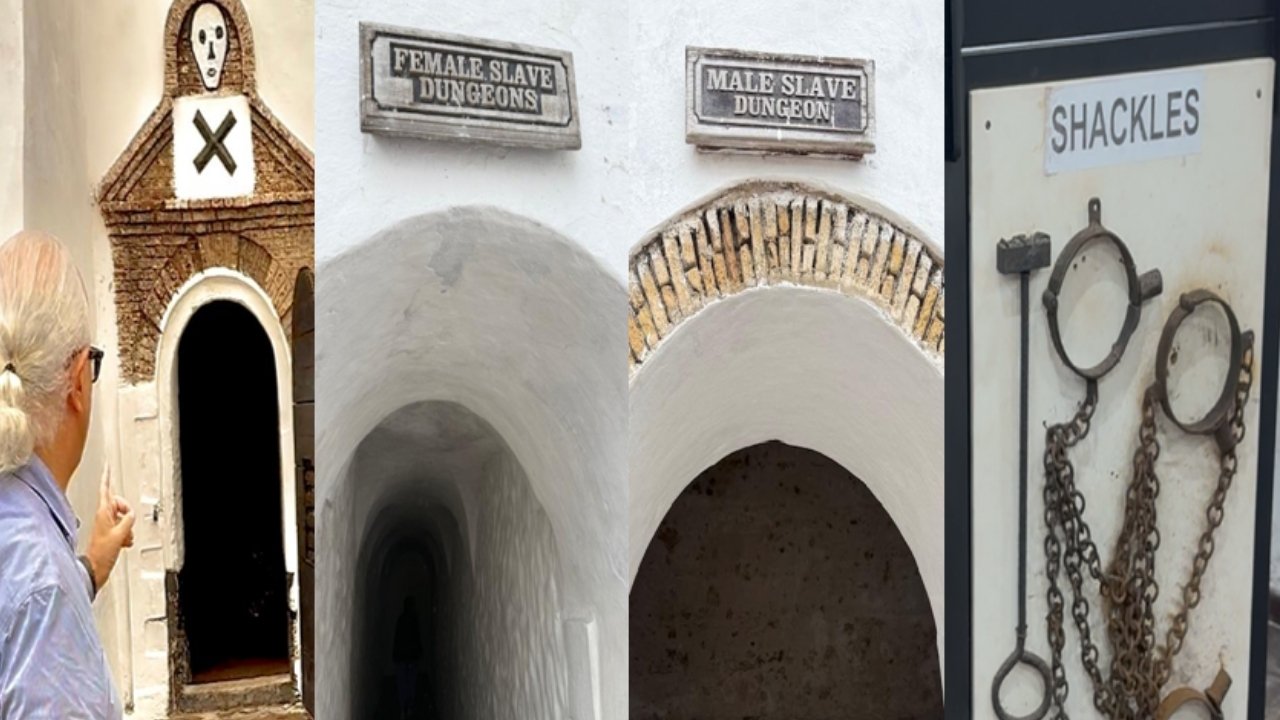

139 Baker Street
London, United Kingdom


Rising on Ghana’s coastline, Elmina and Cape Coast Castles appear as weathered fortresses of stone and sea. Yet behind their walls lies a story far heavier than the ocean breeze that surrounds them. These castles, built in the 15th and 16th centuries, were not merely trading posts, they were prisons, staging grounds for the transatlantic slave trade, and silent witnesses to one of humanity’s darkest eras.
Elmina Castle, constructed by the Portuguese in 1482, greets visitors with a sobering reality. Its dungeons, damp, airless chambers where thousands of Africans were chained together still carry the weight of despair. Standing in these cramped cells, it is impossible to ignore the echoes of human suffering, the lives torn apart, and the brutal efficiency with which bodies and spirits were broken.
Cape Coast Castle deepens this pilgrimage. Here, the infamous “Door of No Return” marks the final threshold for millions forced into slavery. For those who walked through it, the world behind them was forever lost, and the world ahead held only uncertainty and unimaginable pain. To stand before that door is to stand at the edge of both history and humanity’s conscience.
The story of these castles is not only about sorrow. It is also about resilience, memory, and the enduring spirit of communities who refuse to let the past be erased. This is where Destination Peace steps in. I founded Destination Peace to dismantle what I refer to as “knowledge silos,” those mental barriers that keep cultures, histories, and peoples separated.
Too often, history is consumed in fragments: a paragraph here, a headline there, stripped of context and stripped of empathy. Destination Peace breaks that cycle. By guiding visitors through Elmina and Cape Coast Castles, the organization transforms static information into living memory. Participants are not just tourists, they become witnesses, dialogue partners, and bridge-builders.
The work of Destination Peace insists that history must not remain a cold record on a page. It must be felt, shared, and wrestled with. Only then can we honor the past while cultivating a future rooted in compassion and understanding.
The journey through Elmina and Cape Coast is not just a look back; it is a mirror held up to the present. These stones remind us that the struggle for dignity and freedom is unfinished and that silence is complicity.
In Part II, we step deeper into the architecture of cruelty where a simple trap door reveals the calculated dehumanization embedded in every corner of Elmina Castle.